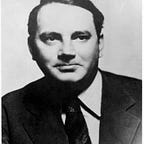Young Thomas Wolfe’s Curls
“…they were the symbol of his babyhood to her, and her sad heart, so keen in marking departures, refused to surrender them.” Look Homeward, Angel
Upon seeing a photograph of Thomas Wolfe at age 7 or 8, with long hair styled into thick curls, one might be forgiven for thinking the photograph is of a little girl. The image will surprise those who view historic fashions through a modern lens. Tom sported these curls until age 9 when he got head lice, and they were begrudgingly trimmed off by his mother Julia. She stored the curls as keepsakes just as she did with two of her other sons, Ben, and Fred. These curls reside today in preserved storage at the Thomas Wolfe Memorial and shed light on the complexity of gender norms in family history.
Long, curly hair was a common fashion for American boys from the 1880s through the 1920s. It can largely be traced back to the popularity of the children’s book Little Lord Fauntleroy by Francis Hodgson Burnett. Burnett was a devotee of author Oscar Wilde, who was known for his flamboyant dress. She dressed her son Vivian in velvet suits with lace trim and breeches inspired by Wilde’s style. His long hair also was styled into luxuriant curls. The hairstyle achieved cultural icon status when it became the trademark of the hero of Burnett’s story Little Lord Fauntleroy, which was published as a series of short stories in St. Nichols Magazine in 1885, then as a novel by Charles Scribner’s Sons in 1886, and finally as a play in 1888. The popularity of the look quickly snowballed, inspiring many mothers in the U.S. and abroad to doll their sons in similar fashion. The trend was beloved and reviled in seemingly equal measure: To the chagrin of their sons Fauntleroy fashion fever was prevalent among many mothers.
In a world strictly defined by gender roles, the Fauntleroy style made young boys appear androgynous at best and effeminate at worst. While dress-like “frocks” were commonly worn by younger children, by age 8 boys and girls were expected to “look” like boys or girls. For children like Thomas Wolfe, perceptions of femininity led to bullying. In chapter 8 of Look Homeward, Angel, he described how his classmates at school made fun of him and how he pleaded with his mother to cut his hair. Tom wrote, “Eliza had allowed his hair to grow long; she wound it around her finger every morning into fat Fauntleroy curls; the agony and humiliation it caused him was horrible, but she was unable or unwilling to understand it, and mouth-pursingly thoughtful and stubborn to all solicitation to cut it.” Julia Wolfe eventually cut Tom’s curls, but she later recalled in an interview, “…the sad part for me was my baby was gone — he was getting away from me.”
Little Lord Fauntleroy remained popular for many years, but Fauntleroy fashion for boys died out sometime in the 1920s. As for Thomas Wolfe, the trauma of his early childhood curls lived on in his memory. He later plainly expressed his feelings about them in the writing of Look Homeward, Angel. For Julia they lived on figuratively in memory and literally in boardinghouse storage. Keeping “hair relics” like this was common practice in this era, when locks of hair were often exchanged between loved ones as keepsakes while someone was away, had died, or in the case of young Tom, had reached a new stage in life.
Tom’s hair curls will likely continue to surprise visitors viewing the exhibits at his childhood home. They stand in stark contrast to the more “manly” haircuts of the time and saw a long period of popularity compared to other hairstyles over the years. What is likely unsurprising to many is Tom and Julia’s conflicting feelings about the style reflect the ongoing fashion wars between children and their parents waged through the ages. The images of young Thomas Wolfe’s hair at the Thomas Wolfe Memorial are a reminder of how the smallest details often have the most complex histories.
Sources/Further Reading:
The Wax Cylinders: Julia Wolfe Interviews by John Skally Terry (Thomas Wolfe Society 2008)
“The Masculinization of Little Lord Fauntleroy”: https://daily.jstor.org/the-masculinization-of-little-lord-fauntleroy/#
“The Dead Still Among Us”: https://www.jstor.org/stable/pdf/41307854.pdf?refreqid=excelsior%3A30fad3f9fff86c98d1a0ecb08ae3dbb6&ab_segments=&origin=&acceptTC=1
“Little Lord Fauntleroy: The Darling of Mothers and the Abomination of a Generation”: https://www.jstor.org/stable/490296?seq=20#metadata_info_tab_contents
Fashion History Timeline, 1880–1889: https://fashionhistory.fitnyc.edu/1880-1889/
Fashion History Timeline, 1890–1899: https://fashionhistory.fitnyc.edu/1890-1899/
